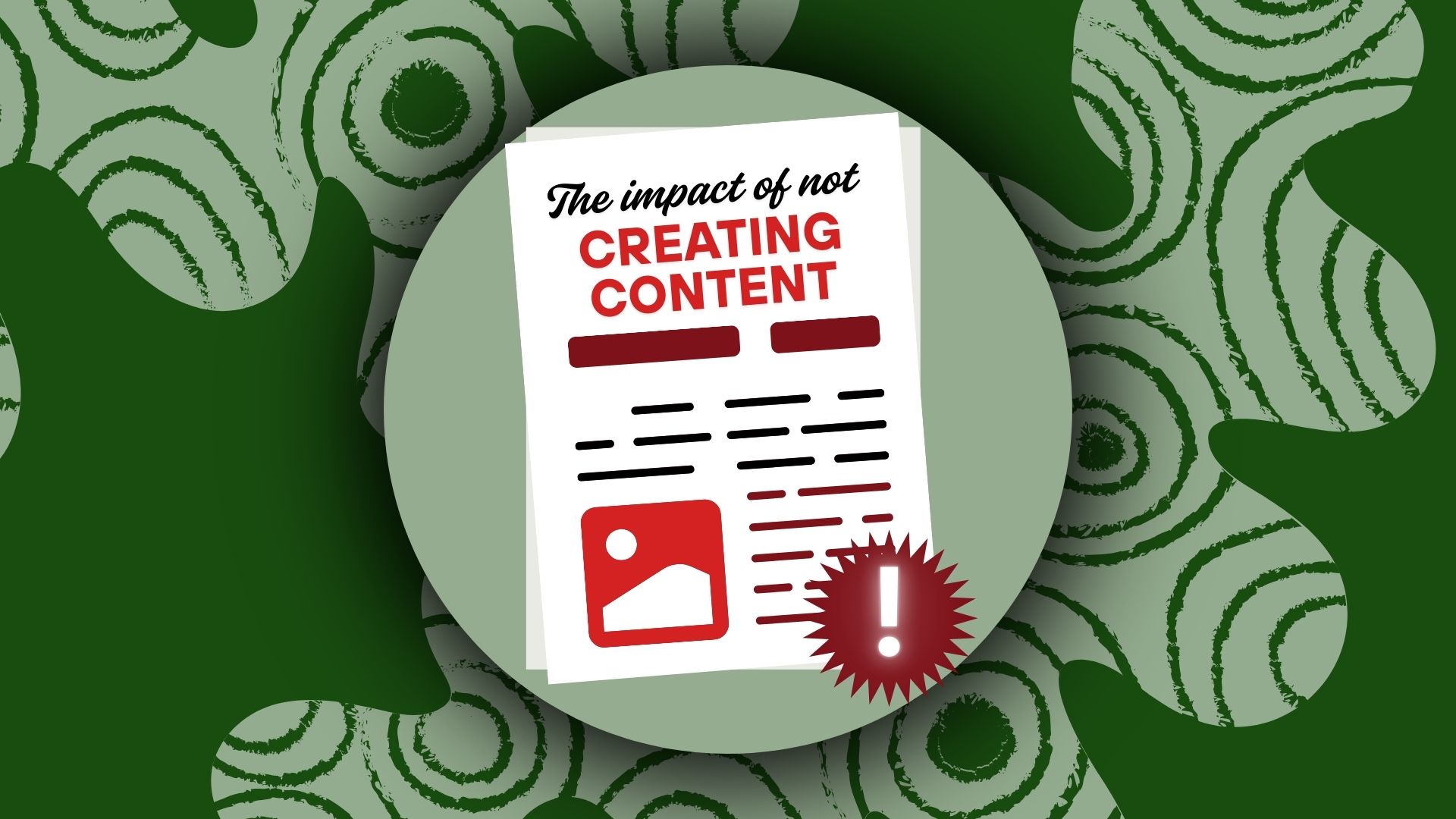
What happens if my business stops creating content?
September 26, 2025 Posted by Maisie Lloyd Round-Up 0 thoughts on “What happens if my business stops creating content?”Whether it’s a drought of ideas or you no longer see the value in creating content for your business, it’s a fundamental element of an effective marketing strategy. There are plenty of reasons why a business may stop creating content, but it’s important to understand the value and direct impacts on your business’s performance.
The short-term effects of not creating content as a business
In the short term, the effect may be only slight, seeing things like a small drop in traffic, a reduced click-through rate, or low volumes of people unsubscribing from email campaigns.
But these small changes can have a domino effect, which can cause websites to tank in rankings, which can then have a knock-on effect on getting leads and conversions for their product or services.
The long-term impacts of not creating content as a business
The long-term consequence of neglecting to create and update content on a website is a severe detriment to the success and longevity of a website.
- Content begins to become outdated.
- Audiences become estranged from the brand.
- Visibility online is significantly impacted.
- Lead and conversions are directly impacted.
- The rebuilding period takes longer to restore growth.
- Budget may be wasted on crawl spend.
- The impression made on new visitors is poor, and the user experience is negatively affected.
- Your competitors stand to exceed where you are failing.
How to remedy content stagnation
Creating content is only worth doing if you want to add value to your brand and build an audience. Without intention or goals, there’s no purpose in producing content.
The approach you take really matters; breaking it down into manageable steps makes producing content much simpler.
Step 1: Audit your existing content
If you have content on your site, create a document like an Excel sheet, track the metrics for the content. Looking at things like the average engagement time, click-through rates, and volume of users looking at the content, within a set period.
This can give you a snapshot into what has and hasn’t worked for your brand. Allowing you to identify the top performers, pieces of content that could benefit from an update, and opportunities to remove outdated content that no longer serves your site. Ultimately, this will shape the way you begin to ideate and map out your content calendar.
Step 2: Ideate
This step requires you to research and ideate for pieces of new content. Utilising competitor audits can also expedite this process, as it can help you to recognise content gaps and opportunities for inspiration.
When researching, tap into various resources, look across social platforms and on forums to find conversations that relate to your business and its offering. Using journals, books can help not only bolster your understanding of topics but also help you uncover new angles to approach creating new content.
Step 3: Begin planning
This is the part in the process where you begin to create a physical document outlining your ideas, assigning dates and responsibilities, and mapping the structure and information needed to be included.
If you’re concerned about the resources your business has, thus impacts your ability to produce, try making one really great piece of content each month. This will ensure you don’t fall behind your peers, and your audience is still being catered to.
We delve into the types of things you need to include in your editorial calendar in our “What is the purpose of an editorial calendar” article. We recommend planning for 6-12 month periods and conducting content audits to track performance.
Step 4: Put your planning into practice
Once your content calendar is mapped out, it’s time to start executing your plan. Create your content with confidence, follow your plan and measure your success. Whilst not every piece of content is going to be a sensation, it serves as the foundation for your business’s online performance to grow.













